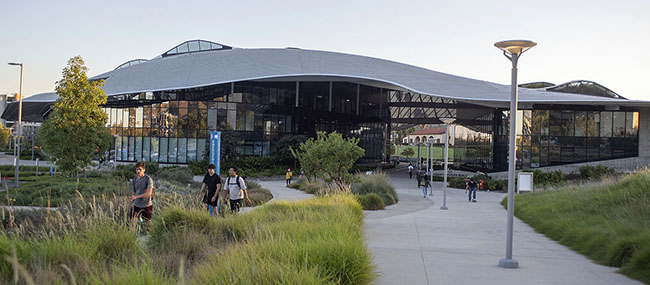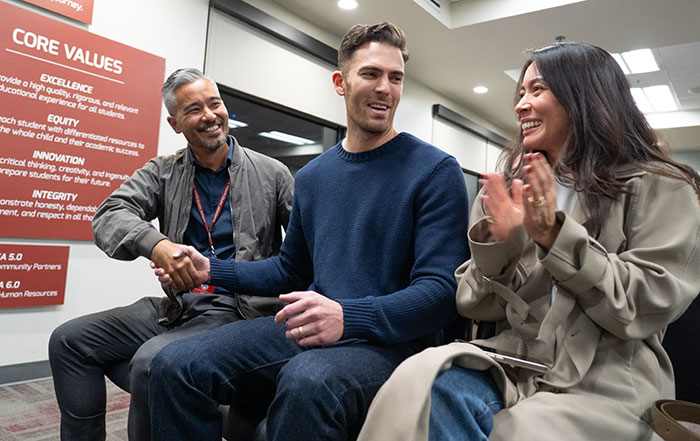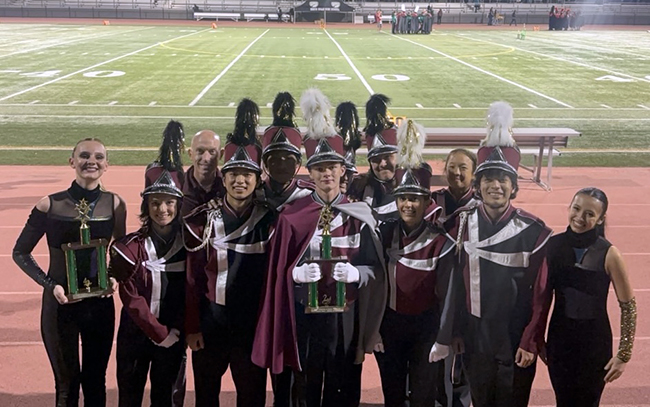Recent attack shows need for preparedness at colleges
Students and staff at the Claremont Colleges recently got a lesson in the importance of emergency preparedness, right in the middle of a safety drill.
The 5 Cs had just concluded a 10-minute cross-collegiate practice lockdown when news of the stabbings at Lone Star College in Texas hit.
After retiring as Pomona College dean of students in 2011, Neil Gerard now serves as senior project manager for the college. At 11:30 a.m., he was helping conduct a training session in Pomona’s Emergency Operations Center when staff members—many of whom had their laptops open—began hearing about the horrific attack via the Internet and text messages.
Learning that a student had systematically stabbed 14 students at the Houston community college only served to underscore the need for such a drill.
“It does add realism to an exercise, sobering as it is,” Mr. Gerard said.
Monday’s practice, which was enacted for the populations of Pomona, Pitzer, Scripps, CMC and Harvey Mudd colleges, revolved around a hypothetical situation in which an active shooter had breached their respective campuses. It was modeled after an incident last year when 2 armed men fled from police and onto the Cal State Fullerton campus. Hundreds of students were barricaded in their classrooms for several hours while SWAT teams combed the university for suspects wanted in connection with a fatal robbery.
Unlike the Fullerton scenario, which lasted some 8 hours, the local lockdown was brief. At 10:40 a.m., toward the end of a class hour, Claremont College students received a text via the Connect 5 Emergency Contact System saying, “This is a test. We are in a lockdown drill.” By 10:50 a.m., they were given an all-clear notice and allowed to go about their business.
The schools’ emergency response teams, however, including Mr. Gerard and numerous staffers at Pomona College, continued with their drill, practicing emergency contingencies and brainstorming for new ideas.
Along with sounding a cautionary note, there was an instructive component to the tragedy in Texas. Staff of Pomona College’s Office of Communications had spent the morning crafting messages to the campus community for the purpose of the safety drill. After learning about the stabbings, they visited the Lone Star College website to see what they had done with their homepage.
It featured a banner headline in red 30-point type that said “Alert” and was accompanied by the story of what had happened plus information, phone numbers and instructions on how to exit the campus.
“There’s no missing that. Some people brought up that this was a model we might want to follow in case of a real emergency,” Mr. Gerard said.
The staffs at each of the Claremont Colleges are always on the lookout for ways to improve security and emergency response, Mr. Gerard noted.
“When students’ parents send them however many miles away, they’re entrusting them to us so, to the best of our ability, we’ve got to try and keep them safe,” Mr. Gerard said.
An ounce of prevention is worth a pound of cure, as the saying goes. With this in mind, college staffers are also making a concerted effort to make sure that warning signs from troubled students do not go unnoticed.
Resident advisors, students living on campus who are paid to assist in “establishing a positive living environment in the residence halls,” are asked to report any signs of mental distress displayed by students in their residence halls. They can contact a staff member in student affairs who is on call 24/7 for assistance. If a student or staff member is worried about a student, each college has counseling staff and chaplains ready to advise them. The Claremont University Consortium also offers Monsour Counseling and psychological services for all students of the Claremont Colleges. Their staff includes psychologists, psychiatrists and intern therapists who offer support for a range of issues, including brief individual counseling, psychiatric medication management, groups and workshops, consultation and referrals and crisis intervention.
“Our hope is that if a student started to display symptoms—stop going to classes, stop hanging out with friends—that would send up red flags and someone would report it,” Mr. Gerard said.
At one time, incidences of mass campus violence were relatively rare, the exception being the shocking massacre by engineering student-turned-sniper Charles Whitman at the University of Texas in 1966. Conducted from the university’s clock tower, that attack resulted in the deaths of 17 people along with the wounding of 32 others.
However, that kind of wide-scale campus violence was largely viewed as a horrible fluke. Twenty years ago, a Claremont Colleges safety exercise would have inevitably involved the scenario of a massive earthquake, with students being instructed to “duck, cover and hold.” Of course, the 5 Cs still regularly conduct fire drills as well as earthquake drills, which are particularly important given that many students hail from states where earthquakes don’t happen.
Things have definitely changed for a generation of students who were young children in 1999, at the time of the Columbine High School massacre. That’s one of their “I remember where I was when…” moments, comparable to a Baby Boomer’s experience of the assassination of John F. Kennedy, Mr. Gerard pointed out.
They have since been bombarded with the news of school violence in Newton, Virginia Tech and at any number of college campuses, he said. So they take it seriously when they are instructed to take steps to minimize danger in the case of a campus attack.
Following the directions of a training video, which was shown 4 times in the week-and-a-half preceding the safety drill, students at the Claremont Colleges sheltered in place, locked the door, turned out the lights and maintained silence.
“We used to use safe rooms, which involved people having to run out of where they were to a safe place,” Mr. Gerard said. “But if you do that, you might run into the line of fire, so now we tell people to lock themselves where they are.”
Keeping a college community safe is a crucial but sometimes daunting task, Mr. Gerard said.
“Even in a small school like Pomona, you hope and pray you catch them all, but you never know,” he said.
—Sarah Torribio
storribio@claremont-courier.com










0 Comments